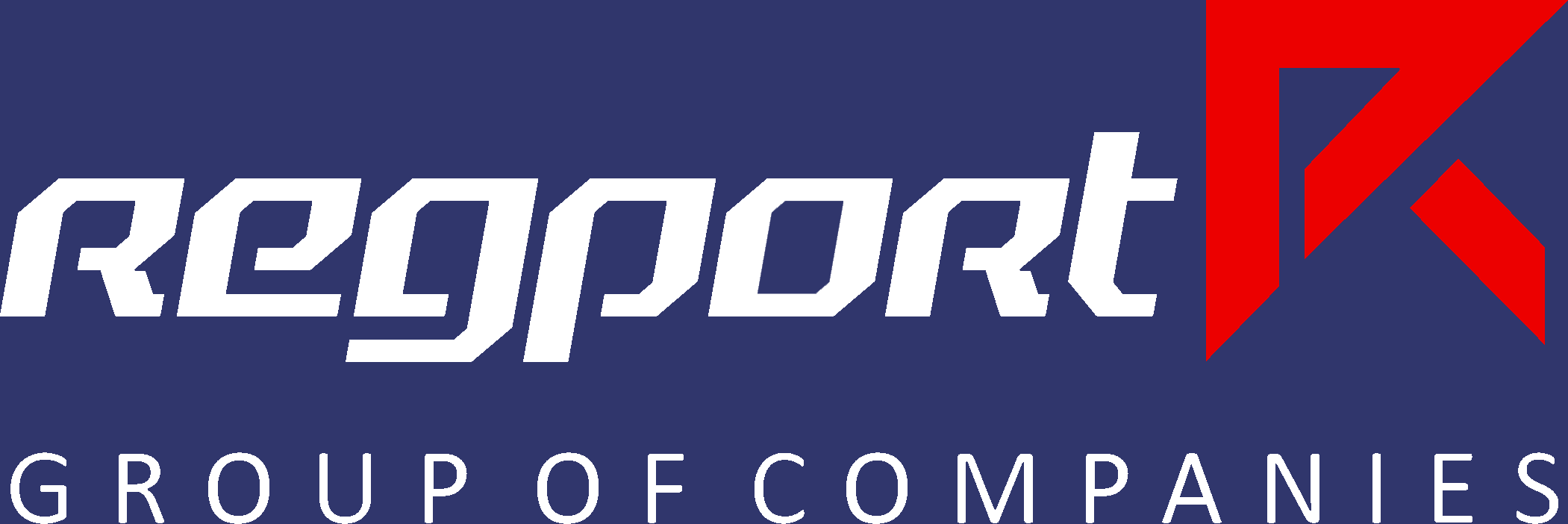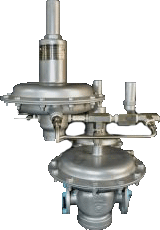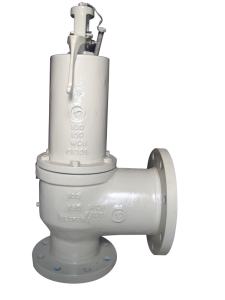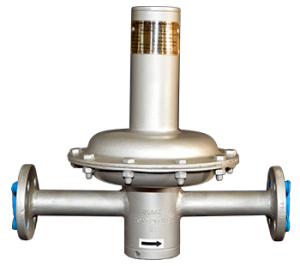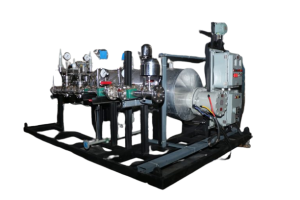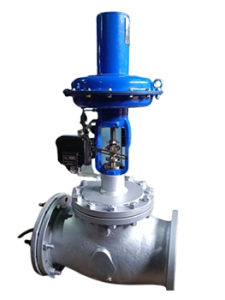Introduction
The Unsung Heroes of Industrial Safety: Pressure Relief Valves
Pressure relief valves (PRVs) might not be the flashiest components in your industrial setup, but they are undeniably some of the most important. These nifty devices are designed to keep systems safe by venting excess pressure before it becomes a problem. Their job is simple yet crucial: keep everything running smoothly and avoid potential disasters caused by pressure build-up.
Why They Matter
When you’re working in high-pressure environments like oil and gas, chemical processing, or power generation, keeping things under control is more than just a technical necessity—it’s a matter of safety. Pressure relief valves are your front-line defense, preventing dangerous explosions, fires, and costly equipment damage by providing a controlled way to release excess pressure.
How They Work
At their core, pressure relief valves act as safety nets. They automatically open to release pressure when it gets too high, ensuring the system stays within safe limits. Think of them as your system’s pressure watchdog, always on alert to prevent any dangerous overpressure situations.
A Brief History
From Steam Power to Smart Tech
The journey of pressure relief valves begins in the 17th century with Denis Papin, who introduced the concept to prevent steam engine explosions. Over the centuries, these devices have seen major innovations—from the introduction of spring-loaded mechanisms in the 19th century to the sophisticated pilot-operated valves of the mid-20th century.
Today’s Cutting-Edge Tech
Fast forward to today, and pressure relief valves are more advanced than ever. Modern versions come equipped with digital controls, remote monitoring, and smart technology integrations. They use high-performance materials to endure the harshest environments, making them more reliable and efficient than ever before.
Types of Pressure Relief Valves
Spring-Loaded Valves
These are the classics of the valve world. Spring-loaded pressure relief valves use a spring mechanism to stay shut until pressure hits a certain point. When that happens, the spring compresses and the valve opens to release the excess pressure. They’re simple, reliable, and versatile.
Pilot-Operated Valves
For those who need precise control and can handle higher pressures, pilot-operated valves are the go-to. They use a smaller pilot valve to regulate the main valve’s operation, offering more accurate pressure management and higher flow capacities.
Thermal Relief Valves
When things heat up, thermal relief valves step in. They handle pressure increases caused by thermal expansion, opening up to release pressure when temperatures rise. This keeps equipment safe and functioning properly.
Rupture Discs
Rupture discs take a more direct approach by bursting at a set pressure. They provide an immediate pressure release and are often used alongside other relief devices for extra safety. Ideal for situations where a quick release is crucial.
Pressure and Safety Relief Valves
Sometimes “pressure relief valve” and “safety relief valve” get tossed around interchangeably. While they both prevent overpressure, safety relief valves are designed for critical, emergency situations, whereas pressure relief valves handle routine pressure management.
Components of Pressure Relief Valves
Valve Body
The valve body is the sturdy frame of the valve, built to handle high pressures and tough environments. Made from durable materials like stainless steel or cast iron, it ensures the valve’s longevity.
Seat and Disc
These are the heart of the valve’s sealing mechanism. The disc presses against the seat to create a tight seal when the valve is closed. Precision in crafting these parts is crucial for effective operation.
Spring Mechanism
The spring mechanism controls the valve’s opening. Adjusting the spring’s tension allows you to set the exact pressure at which the valve will open. It’s all about balancing the spring force with system pressure.
Adjusting Screw
This is your tool for fine-tuning. The adjusting screw lets you tweak the spring tension, setting the pressure point where the valve will open. Getting this right is key to maintaining safe system pressures.
Inlet and Outlet Ports
These are where the fluid or gas enters and exits the valve. The design and size of these ports affect how efficiently the valve handles flow, so proper configuration is crucial.
How Pressure Relief Valves Operate
Basic Principle
Pressure relief valves work by balancing forces. Under normal conditions, the spring keeps the valve closed. When pressure exceeds the set point, it overcomes the spring force, opening the valve and letting excess pressure escape. Once the pressure drops back to safe levels, the spring closes the valve.
Opening and Closing
As pressure builds up, it pushes against the valve disc, lifting it off the seat to release pressure. When pressure decreases, the spring mechanism pushes the disc back down, sealing the valve.
Adjusting Pressure Settings
You can adjust the pressure at which the valve opens by changing the spring tension with the adjusting screw. Accurate settings are essential for effective pressure management.
Applications of Pressure Relief Valves
Oil and Gas
In the high-stakes world of oil and gas, pressure relief valves protect pipelines, storage tanks, and processing equipment. They help prevent dangerous incidents like explosions and fires, ensuring safe operations.
Chemical Processing
Chemical plants rely on these valves to manage pressure in reactors and distillation columns. They prevent dangerous chemical releases and equipment damage, keeping processes running smoothly.
Power Generation
Power plants use pressure relief valves to protect boilers, turbines, and other equipment from overpressure. They play a key role in maintaining safety and efficiency in power generation.
Water Treatment
For water treatment facilities, these valves manage pressure in pumps and pipelines, preventing equipment damage and ensuring smooth operations.
Food and Beverage
In food and beverage production, pressure relief valves help manage pressure fluctuations and protect processing equipment, ensuring product quality and safety.
Pharmaceutical Manufacturing
Pharmaceutical processes often involve high pressures and sensitive equipment. Pressure relief valves maintain process integrity, prevent overpressure, and ensure product safety.
Benefits of Pressure Relief Valves
Safety First
Pressure relief valves are all about safety. They prevent overpressure conditions, protecting people, equipment, and the environment from potential hazards.
Equipment Protection
By releasing excess pressure before it can cause damage, these valves extend the life of your equipment and reduce repair costs.
Minimizing Downtime
Unplanned downtime can be costly. Pressure relief valves help avoid equipment shutdowns by managing pressure, ensuring continuous operation.
Regulatory Compliance
Many industries have strict regulations requiring pressure relief valves. Proper installation and maintenance help you stay compliant and avoid fines.
Challenges and Limitations
Potential Failures
No device is perfect. Pressure relief valves can face issues like leakage, sticking, or incorrect pressure settings. Regular maintenance helps catch and fix these problems before they affect safety.
Maintenance Needs
Keeping pressure relief valves in top shape requires regular inspections, adjustments, and part replacements. It’s essential, especially for high-pressure systems.
Cost Concerns
The cost of valves and their maintenance can add up, particularly for complex systems. However, the cost of preventing catastrophic failures often outweighs these expenses.
Compatibility Issues
Ensuring that pressure relief valves are compatible with specific fluids and pressures can be tricky. Proper selection and installation are crucial for effective performance.
Installation and Maintenance
Getting Installation Right
Proper installation is key to valve performance. This means correct alignment, secure connections, and accurate pressure settings. Following manufacturer guidelines is essential.
Regular Check-Ups
Routine inspections and tests keep pressure relief valves reliable. Check for leaks, verify pressure settings, and conduct functional tests regularly.
Maintenance Practices
Common maintenance tasks include cleaning, adjusting settings, and replacing worn parts. Stick to the manufacturer’s maintenance schedule to keep your valves in top condition.
Troubleshooting Tips
If you encounter issues like leakage or incorrect settings, a systematic approach is needed. Understanding how your valve operates helps in effective troubleshooting.
Regulatory Standards and Compliance
Understanding Standards
Pressure relief valves must meet various industry standards for safety and performance. Familiarize yourself with these regulations to ensure compliance.
Industry-Specific Rules
Different industries have their own regulatory requirements. For example, oil and gas follow API standards, while chemical processing adheres to ACS guidelines.
Best Practices
To stay compliant, follow best practices like regular inspections, proper documentation, and adhering to guidelines. Keeping up with regulatory updates is also important.
Pressure relief valves are vital for industrial safety, equipment protection, and regulatory compliance. Their role in managing pressure and preventing failures is crucial.
Industries should adopt best practices for valve maintenance and stay informed about new advancements. By doing so, they can ensure safe and reliable operations, contributing to a safer industrial environment.
